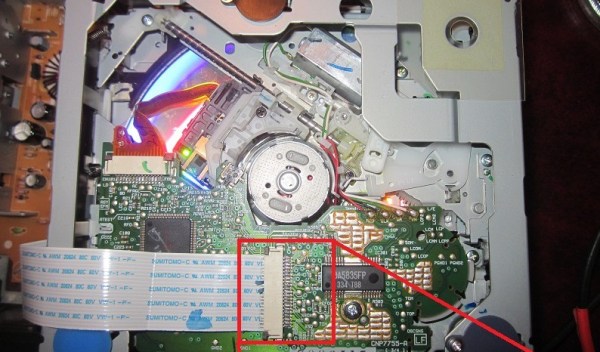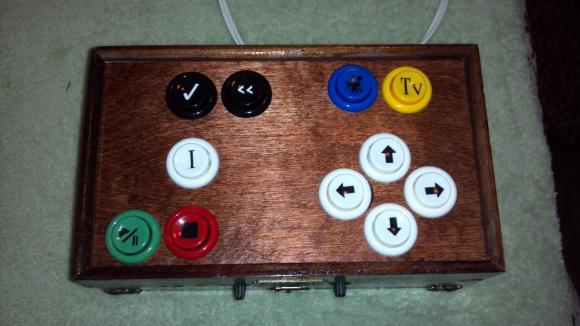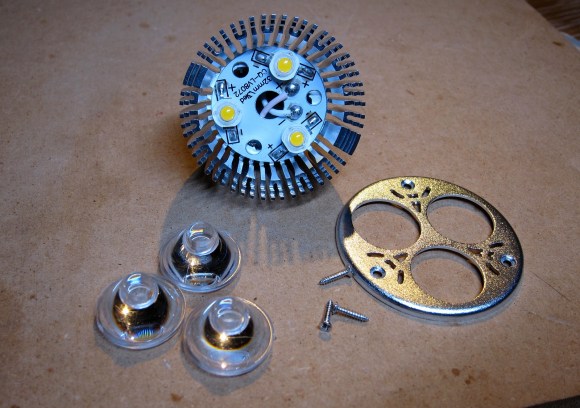[Gezepi] wanted to add an auxiliary input to the stereo in his 1994 Camry. At first look there wasn’t an easy way to patch into the system. But a bit of probing with an oscilloscope and figured out that he could inject audio through the CD ribbon cable shown above. The CD reader is a self-contained unit that receives commands through the cable, and passes analog stereo audio back to the receiver portion of the head unit. We’re not sure how he figured out which pins to tap into, but it may have been as easy as probing with some headphones while a CD is playing.
The extent of his hack is documented in the image below. He cut the two audio leads on the CD side of the ribbon cable, then soldered his auxiliary jack on the receiver side of the cable connector. This ensures that two audio signals aren’t being piped into the receiver at the same time. Unfortunately it also means that he won’t be able to use the CD player. We have seen other methods that use a special audio jack as a pass-through which cuts the connection when a jack is inserted. That’s the method used in this Subaru hack.
Continue reading “Car Stereo AUX Input Taps Into CD Ribbon Cable”





 Halogen bulbs put out a lot of focused light but they do it at the expense of burning up a lot of Watts and generating a lot of heat. The cost for an LED replacement like the one seen disassembled above has come down quite a bit. This drove [Jonathan Foote] to purchase several units and he just couldn’t resist tearing them apart to try out a couple of hacks.
Halogen bulbs put out a lot of focused light but they do it at the expense of burning up a lot of Watts and generating a lot of heat. The cost for an LED replacement like the one seen disassembled above has come down quite a bit. This drove [Jonathan Foote] to purchase several units and he just couldn’t resist tearing them apart to try out a couple of hacks.









